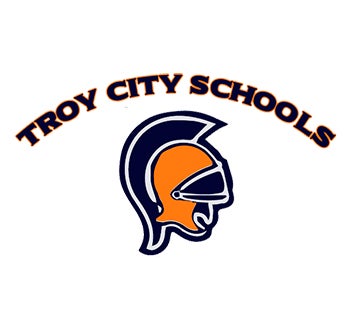ROAD TOUR: Trip highlights road woes, funding needs in county
Published 3:00 am Wednesday, January 20, 2016
County Engineer Russell Oliver stood before the busload of government officials and paused.
“This road kind of speaks for itself,” he said as he talked about County Road 2204. Having just travelled along the unpaved portion of the road, participants in Wednesday’s Drive Alabama tour were about to enter the paved section of the CR2204, where a “rough road” sign stood sentry over the roadway constructed in the 1960s.
“The total width of the pavement in some places is only about 16 feet wide,” he said, as the tour bus jostled down the roadway.
“You literally cannot have two cars pass at the same time,” added Joey Jackson, District 6 commissioner. “When people talk to me about why I’m so concerned about these roads it’s a safety issue. I’m surprised no one has been seriously injured.”
More than two dozen government officials took part in the drive-along county road tour, including the Pike County Commissioners; representatives of the Troy and Brundidge city councils; and state Sen. Jimmy Holley and state Rep. Alan Boothe. Joining them were representatives of Troy University, the Pike County School System and the county engineer’s office.
The goal was simple: to highlight the critical condition of Pike County roads and bridges and the need for a sustainable road and bridge revenue source for local governments.
“We have 730 miles of roadways in the county,” Oliver said at the beginning of the tour. “Of those, 200 miles are considered major collectors and eligible for federal funding. A few of the others in a limited way may qualify for some funding.
“And we have 167 bridges that are 20 feet or longer. Of those, 60 are posted or restricted to traffic; two are closed; and 34 are considered structurally deficient and/or functionally obsolete.”
Maintaining and repairing those roadways and bridges requires funding that simply doesn’t exist at the moment, he said.
A 2010 joint study by the Association of County Engineers of Alabama and the Alabama Department of Transportation indicated that Pike County should be expending $5.2 million per year to resurface its 400-plus mile paved road network on a 15-year cycle. An additional $1.9 million annual expenditure is needed to replace and rehabilitate the 169 county-owned bridges on a 50-year cycle.
Currently, the county’s only source of revenue for local road and bridge repairs and maintenance is a gas tax, and revenues have remained flat even though costs of equipment and labor have increased.
Wednesday’s tour was designed to highlight a small cross-section of the roadways in need of repairs and maintenance. It included visits to County Road 2201, County Road 2204 (both the unpaved and paved sections) and County Road 2243. It also included tours of two ATRIP projects deemed “success stories”: County Roads 2214 and 2290.
The Alabama Transportation Rehabilitation and Improvement Program (ATRIP) was introduced by Gov. Robert Bentley in 2012 and invested more than $1 billion in local roads and bridges. It generated $11.6 million improvements over a four-year period in Pike County.
But it isn’t enough. “ATRIP has been fine, but it’s not available for every road,” said District 4 Commissioner R.A. Goodson. “I have a one and a half mile section of (county road) 3310 that has 18 chicken houses on it … ATRIP couldn’t be used for the repairs, but the road is in worse shape than some of these.”
Robin Sullivan, District 2, said from an economic development standpoint the need to invest in the roads is critical. He cited the information shared by Mike Johnson, bus superintendent for Pike County Schools, who told the group that while CR2214 was closed for repairs, detours forced bus drivers to take alternate routes. “We were running nine busses on those detours, twice a day. That’s adding 1,700 detour miles a day,” Johnson said. From wear and tear on the buses to added fuel costs to lost state funding due to fewer students on the bus routes, the road closures and detours proved costly to the system.
“When you think about it in those terms, repairing our roads is an economic development issue,” Sullivan said.
The goal of Oliver and the 67-county Drive Alabama lobbying effort is to raise awareness about the issue and gain grassroots support for creating a sustainable revenue source at the state level.
Boothe said both he and Holley are aware of the needs and want to help. “The gas tax hasn’t been raised since 1993,” Boothe said. “I think people would support (that idea) but we need to see where the money is going to go … we need to make sure it gets back to counties like Pike County.”




